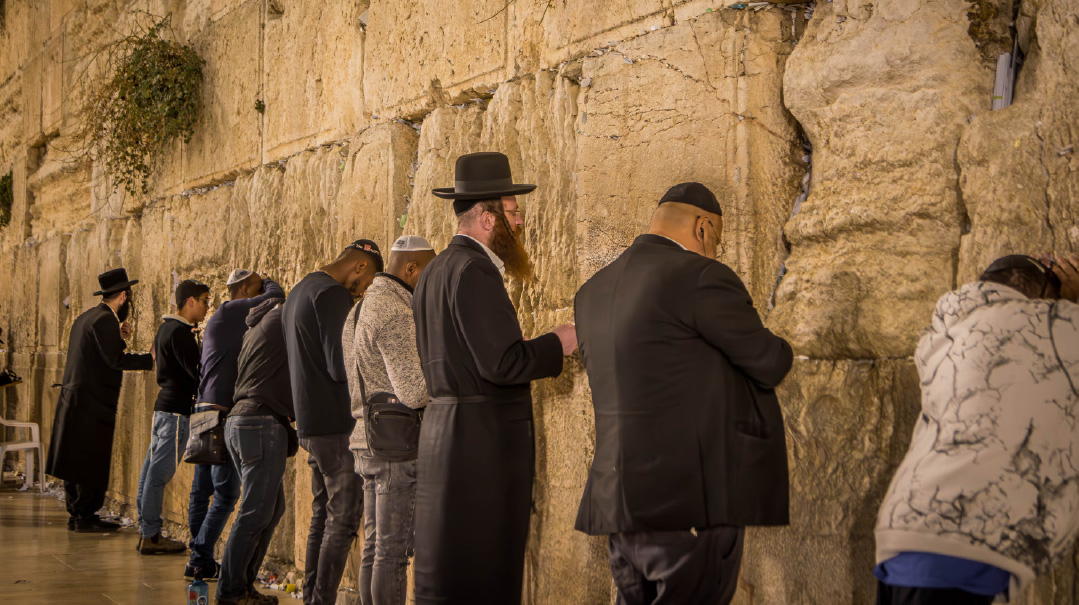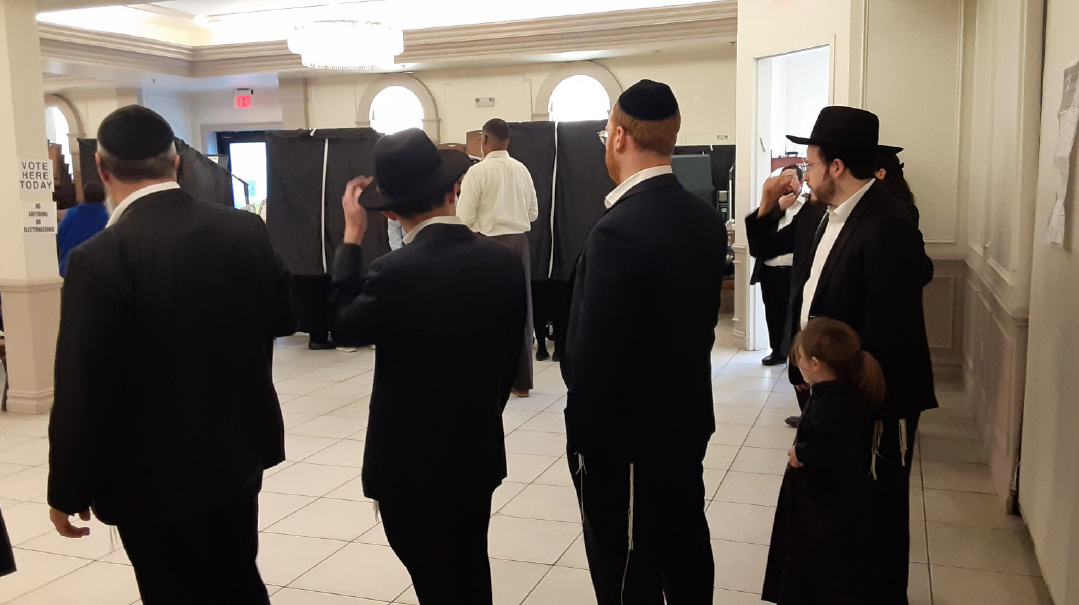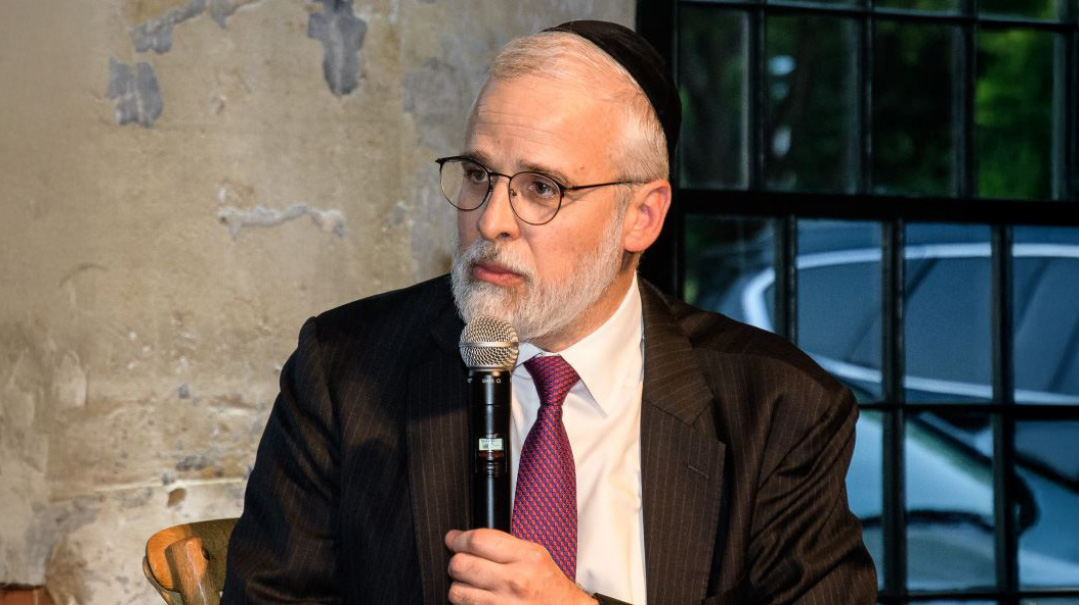Entering the Gate of Mashiach
| April 22, 2025What once felt rare or even strange has become surprisingly natural

During Sefiras Ha’omer, we mourn the talmidim of Rabi Akiva — 24,000 lives lost because they didn’t show proper respect to one another. Not because they argued, but because they couldn’t properly honor someone whose path looked different from their own.
Today, perhaps for the first time, we’re being given a genuine opportunity to begin healing that mistake. We’re living in a unique time in Jewish history — one that few could have predicted just a generation ago.
Walk into a shul today and look around. You might see a Modern Orthodox Jew wearing a gartel, a beketshe, or even a shtreimel. You might hear a litvishe yungerman quoting a Sephardic chacham, a charismatic kiruv speaker, or mekubal. You might see a Sephardi learning from the Chumash of Yeshivas Brisk.
All around us, chassidim, Litvaks, Sephardim, Yekkehs — each rooted in their own mesorah — are now also learning from and being shaped by each other’s mesorah. People have suddenly embraced traditions from all points on the spectrum. What once felt rare or even strange has become surprisingly natural.
What’s behind this shift?
There are several factors that contribute to this blending of mesoros, but a very significant one is accessibility. Torah used to be something you received directly from your rebbi, your parents, your community, your particular circle. But today? One click, one download, one forward, one post — and you’re hearing voices from around the Jewish world.
You’re not limited to what you grew up with or what’s available locally. You can learn from anyone who resonates in your heart and speaks to your soul.
So people aren’t just looking for what they were taught. They’re searching for what strengthens them. For what speaks to them. And for many, that means drawing from more than one tradition and chinuch.
Of course, this new phenomenon comes with real concerns.
Aside from the other well-known challenges that come with technology, we’re living in a time when, with just a camera, some charm, and a supportive audience, anyone can step into the role of a public Torah personality. And in truth, not every inspiring speaker accessible online is someone you’d necessarily want shaping your worldview. It’s indeed crucial to ask: Who is this person? Who were his rebbeim? What values is he promoting? What’s behind the message? And in fact, not every voice should be accepted. Not every platform is worth listening to. Not every podcast is the “daas Torah” that deserves our ears and hearts.
Still, alongside those concerns, there’s something very meaningful happening with this merging of mesoros.
The 13th Gate
It’s easy to look at someone who blends different backgrounds or hashkafos and assume he’s just confused. A modern guy in a shtreimel? A yeshivish bochur deeply immersed in Sephardic Torah or chassidic thought? It can feel jarring at first glance — like he’s caught between worlds, unsure of where he belongs. Perhaps it reflects a lack of identity.
And indeed, sometimes it can in fact be a case of confusion, or a lack of identity. But perhaps it can also be something else. Perhaps the person does know where he belongs. Maybe he’s just standing on a different kind of path — a broader path.
Maybe this is the part of the unique Torah path of our generation — the generation that will b’ezras Hashem greet Mashiach. Let me attempt to explain.
The Navi Yechezkel tells us that the Beis Hamikdash had 12 gates — each one designated for a specific Shevet of Klal Yisrael. Rav Chaim Vital (Pri Eitz Chaim, Shaar Hatefillah) explains that each Shevet had its own unique nusach hatefillah, its own spiritual rhythm, and its own dedicated path through which its tefillos would ascend to Shamayim.
But what about those who don’t know their “shevet” — or, who, for some reason, don’t quite identify with any one in particular?
The Maggid of Mezritch (Maggid Devarav L’Yaakov 141) offers a beautiful insight: There is a 13th gate — a shaar hakollel. It’s the entrance for every Jew who doesn’t walk a single, defined path but still seeks to approach Hashem with sincerity and depth. In the realm of tefillah, the Maggid linked this to the nusach of the Arizal, which he described as an all-inclusive gateway, one that gathers and uplifts the prayers of every stream.
But what’s true in tefillah is also true in life.
Some people walk confidently through a single gate. Their path is clear, their mesorah deeply rooted, their community well-defined. And then there are others who find themselves drawn to something broader. Not because of uncertainty or a lack of grounding, but because they see the beauty in the full picture. Their avodah is to enter the shaar hakollel, which incorporates the strength of each “shevet” and derech.
They recognize that Torah isn’t a narrow channel. It’s a vast ocean, fed by countless rivers — each one adding its own richness and depth. And they’ve discovered how to bring them together. To grab something from everyone. The warmth of chassidus. The precision of the litvishe derech. The sincerity of the baal teshuvah. The grounded strength of the FFB. The kevod haTorah of the Sephardim.
Each one a distinct note. Together — a symphony.
To live as a Yid standing at the shaar hakollel is not to lack identity. It’s to weave many diverse threads into one beautiful, unified tapestry of Torah. And perhaps that is part of the journey of the contemporary Torah Jew — to embrace the shaar hakollel.
The Man Without a Chevreh
The idea of the shaar hakollel perhaps explains another type of Jew we often see in our communities.
Some people seem to slide right into place. They find their chevreh in yeshivah, settle into a shul that fits, and everything just clicks. The rhythm of their life aligns smoothly with a group of friends and a community where they feel instantly at home.
But for others, it’s not that simple.
They pop into different shuls, show up at different events, always pleasant, always contributing — but they don’t seem like they are part of the inner circle. They often orbit the chevreh, never quite inside it.
Maybe they’ve tried to connect, but their hashkafos don’t line up neatly with the people around them. Maybe they long for deeper, more meaningful conversations, but the talk around them is more about politics or sports. Maybe they’re too modern for the yeshivish crowd, too yeshivish for their more modern friends — or maybe they’re just... different.
But what seems like a weakness, what seems like the simple case of a “floater,” upon deeper reflection, might in fact be an incredible strength. Because when a person doesn’t fit perfectly into one group, he often begins to see the beauty in all of them. His mission is to enter the shaar hakollel. He notices things others miss. He begins to blend the strengths of each tzibbur into a broader, richer, more expansive view of Yiddishkeit.
He may not carry a specific banner. But that is exactly what allows him to carry the essence of many banners.
As Chazal (Avos 4:1) teach: “Eizehu chacham? Halomeid mikol adam.” Who is wise? One who learns from every person.
Wisdom isn’t about fitting into a mold. It’s about having the openness to learn, to connect, and to grow beyond boundaries.
The Key to Geulah
The Chida, in Devarim Achadim (derush 6), writes that since the Second Beis Hamikdash was destroyed due to sinas chinam — baseless hatred — it follows that the only way to rebuild it is through unity and repairing this very flaw. That is why, as Midrash Eichah Rabbah (1:9) tells us, Mashiach will be born on Tishah B’Av: because the very key to geulah lies in healing the cause of destruction. When we come together in genuine unity, we begin to undo the damage wrought by sinas chinam. And in our generation, the path to achieving this unity, this healing, is perhaps through tapping into the shaar hakollel, the all-inclusive gateway that has the power to uplift and unite all souls.
The pasuk itself seems to reinforce this idea: “Yaakov called to his sons and said, ‘Gather together, and I will tell you what will happen at the End of Days’ ” (Bereishis 49:1).
Chazal teach that Yaakov Avinu wanted to reveal the secret of the final redemption, but the Shechinah left him, and the vision was concealed. Still, Midrash Rabbah (98:2) offers a powerful insight. According to the Rabbanan, even without revealing the timeline, Yaakov gave his sons a critical message: “Gather together as one. Form yourselves into a single, unified group. Only then will you be ready for geulah.”
Perhaps Yaakov was referring to the shaar hakollel — a gate that represents the integration of all the “shevatim,” all the diverse expressions of Torah. Maybe he was teaching us that the key to geulah isn’t only about peace or unity — it’s about wholeness. A Klal Yisrael that brings together the best of every “shevet,” every community, every flavor of avodas Hashem.
Not by erasing the differences. But by honoring them, and letting them complement one another.
Maybe the first step toward Mashiach is learning to live through the shaar hakollel — with a Yiddishkeit that blends warmth and clarity, depth and simplicity, fire and structure. A Torah life that allows a Litvak to embrace the passion of chassidus, and a chassid to approach learning with the sharp analysis of the litvishe yeshivos. That lets a baal teshuvah draw strength from the stability of an FFB, and an FFB learn sincerity and renewal from a baal teshuvah. A space where an Ashkenazi can absorb the kevod haTorah so deeply embedded in Sephardic tradition.
So let’s not be too quick to dismiss the Yid who doesn’t fit neatly into a box. He may speak in a different voice, draw from more than one wellspring, or walk a path that feels unfamiliar. But that doesn’t make him lost.
It may just mean he’s ahead of his time.
It may mean he belongs to the generation destined to welcome Mashiach — the generation of the shaar hakollel.
Rabbi Aryeh Kerzner is the rav of Agudas Yisrael of Montreal and a noted posek and popular speaker. Many of his shiurim and speeches are available online. He is the author of the sefer Halachah at Home, published by ArtScroll/Mesorah
(Originally featured in Mishpacha, Issue 1058)
Oops! We could not locate your form.







